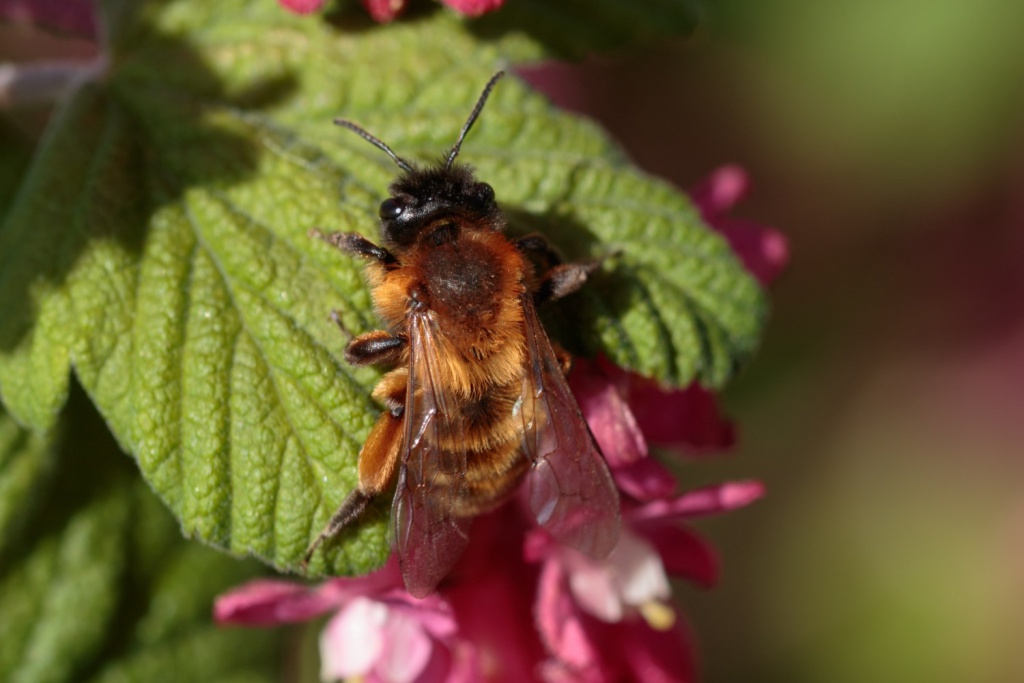A spring-flying bee, the Chocolate Mining Bee is commonly found in urban areas and visits spring-blossoming shrubs.
Fast facts
- Common name(s)
- Chocolate Mining Bee
- Scientific name
- Andrena scotica
- Bee group
- One of the 'mining bees' from the genus Andrena
- When to see it
- April – June
Description
A spring-flying bee, the Chocolate Mining Bee is commonly observed visiting early-blossoming shrubs in urban areas. While a species of mining bee, it is frequently observed nesting in walls. Females often close nest together in groups, sometimes sharing a communal entrance.
Identification
Females
Females are honeybee-sized, with a brown-haired top and some brown hairs on the abdomen. Looking at the pollen brush on the hind legs helps with identification. The pollen brush consists of black hairs above and a brush of white hairs below.
Males are less distinctive and require closer inspection.
Similar species
When the hind legs are covered in pollen, the Chocolate Mining Bee looks similar to females of the Buffish Mining Bee. Female Buffish Mining Bees have dense ginger hair and a bright orange pollen brush. When taking photographs, it is useful to capture the hind legs to aid identification.

Spotted this bee?
Share your sighting to the North East Bee Hunt and contribute to the conservation and study of our region’s bees.
Ecology
On the wing during the spring months, it is commonly observed on spring-blossoming shrubs. Frequently encountered in urban areas, females nest singly or communally, and often share a communal entrance. It’s often found nesting between stonework and in wall cavities. This spring-flying bee can have a second generation in early autumn.
Regional distribution
Found in both Northumberland and County Durham, the Chocolate Mining Bee has been recorded from the uplands to the coast. It is a solitary bee you are very likely to see in urban areas.

Chocolate Mining Bee © Joe Dobinson



